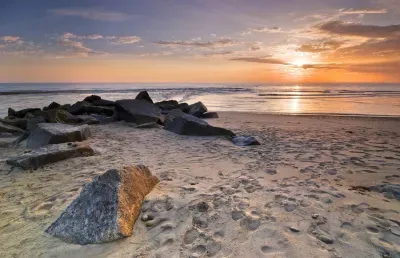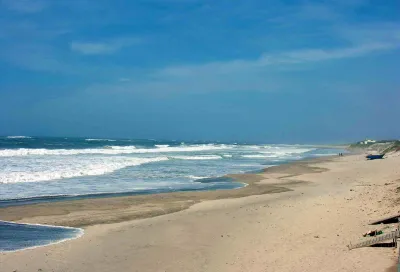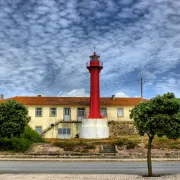
The town of Esposende is firmly off the international tourist trail and you will find barely a mention of it in any guide book. Despite this Esposende is well worth a visit if you are passing, which you may well be if you are visiting the medieval town of Barcelos or heading to the coast from Braga.
Situated alongside the final stretch of the Cávado River before it empties into the Atlantic Ocean, Esposende's heritage is one of fishing but the areas history goes back far beyond this. Within a few kilometres of the town are a number of well preserved and fascinating archeological sites, many of which date back to the Bronze Age. Many of these are centred around the nearby parish of Vila Chã and the most impressive is probably the fortified village of Castro de São Lourenço.

Castro de São Lourenço dates back to the 4th century BC although it was occupied at various times up until medieval times. The site was part of a series of hill forts which controlled the region’s coastal shipping route from their vantage point high above the Cávado River. Today the village is set amongst the pine forests on the hillside of São Lourenço. It consists of some well-preserved granite houses and the remains of the three defensive ramparts that had to be repaired after quarrying operation in the 1980s damaged them.
Other sites of archaeological interest in the area include several dolmen type burial chambers, standing stones and the medieval Cemetery of Barreiras in nearby Fão.
The town of Esposende itself is pleasantly provincial in appearance and has some attractive squares. Along the riverside runs a wide palm-lined boulevard where you will find Esposende's leisure centre, a couple of marinas and the Maritime Museum. Keep heading along the promenade here towards the northern edge of town and you will reach Esposende's excellent beach. The broad stretch of sand here is located right on the mouth of the Cávado and is known for its quality surf. Backed by low dunes the beach is overlooked by the 17th century Forte de São João Baptista and the red metal tower of Esposende lighthouse.

On the other side of the river mouth from the town beach is an even more fantastic beach. Set along the long spit of land that forms the seaward bank of the Cávado is the Praia de Ofir. This 3km stretch of unspoilt sand backed by dunes is part of the Litoral de Esposende Protected Landscape and the further north you head, towards the end of the spit, the wilder it gets. Despite being barely a rock on the whole beach there is a curious rock formation just offshore which is exposed at low tide, the Cavalos de Fão (Horses of Fão).
Over the dunes, on the river side of the beach are extensive tidal marshes which are a haven for wildlife.

